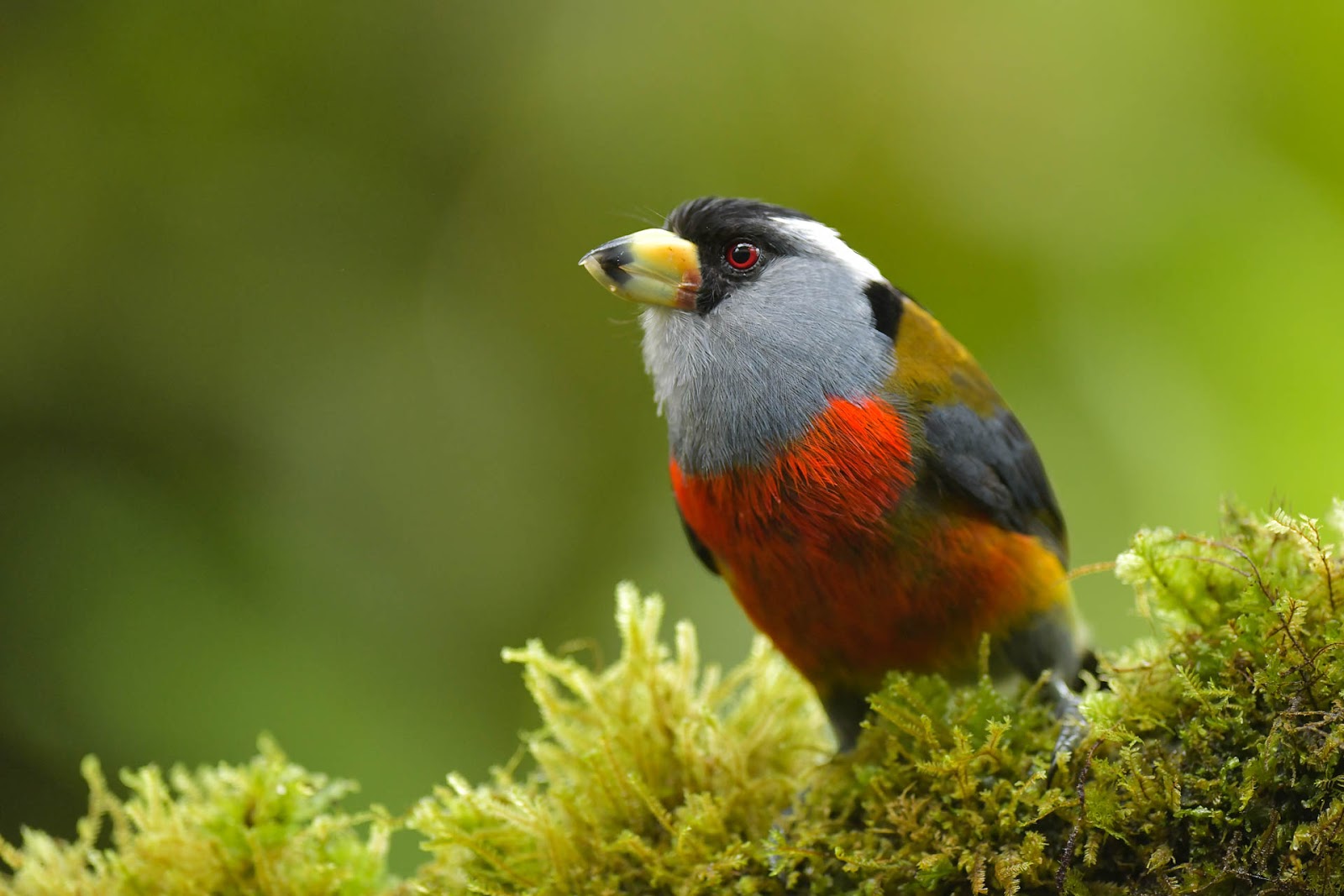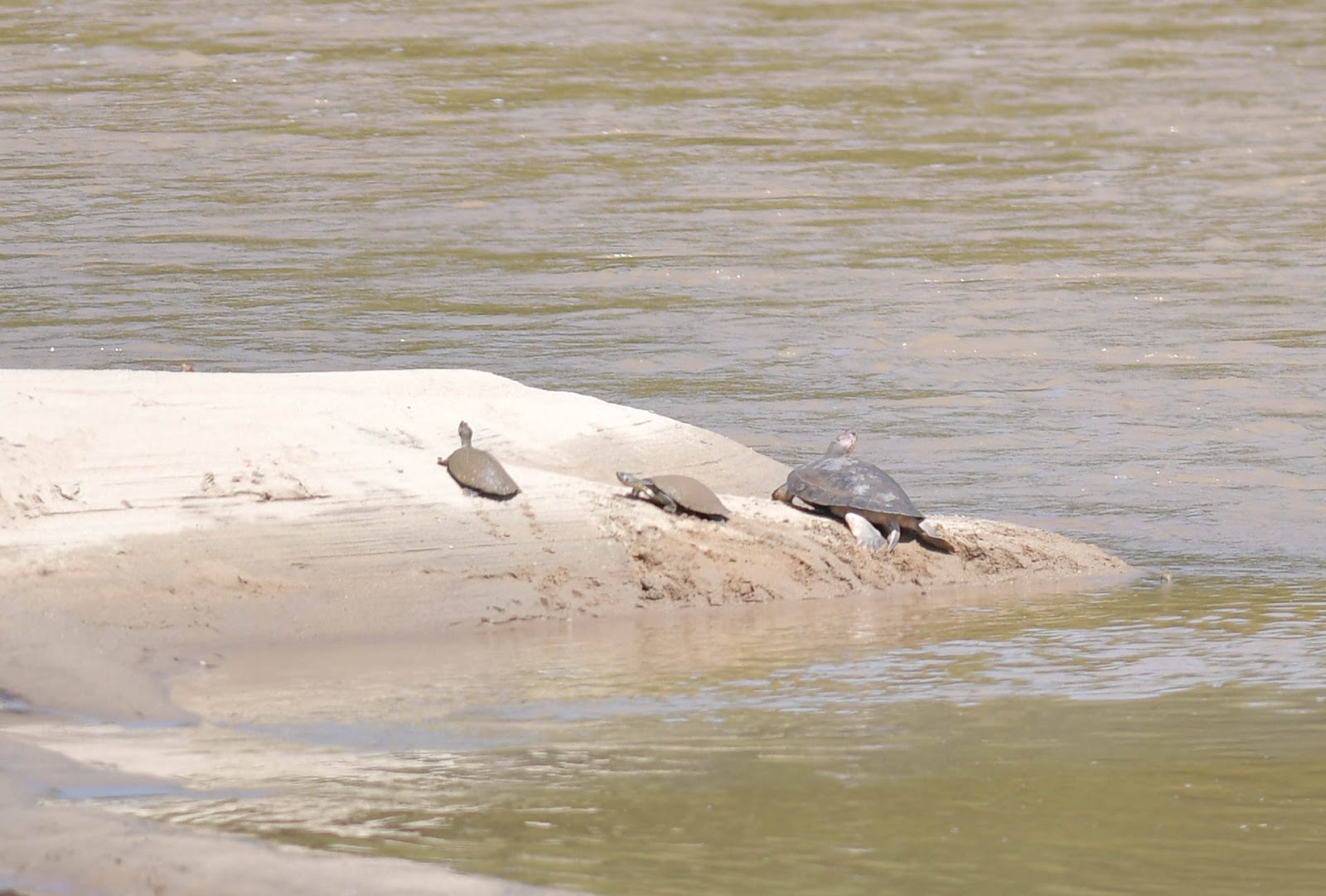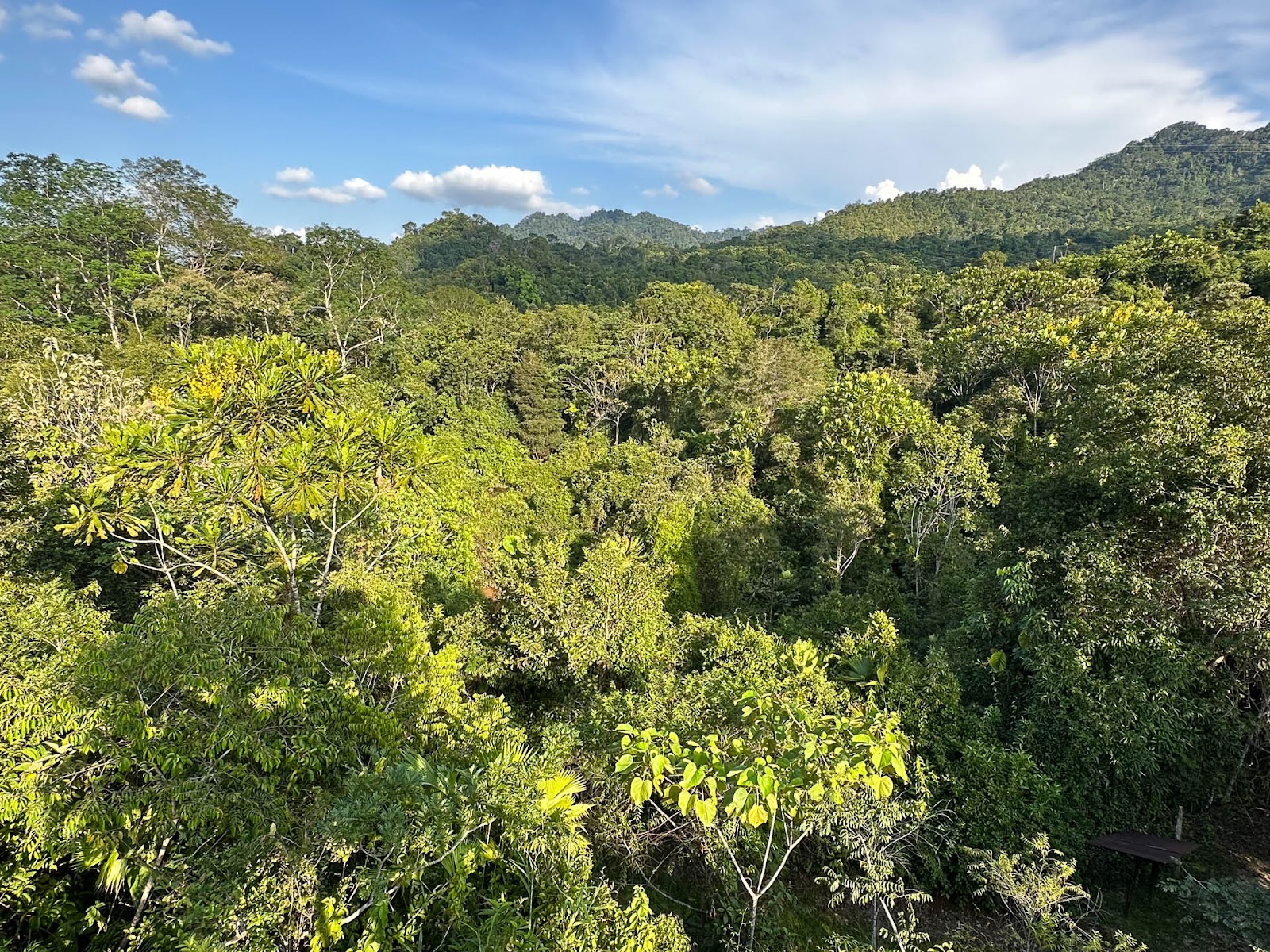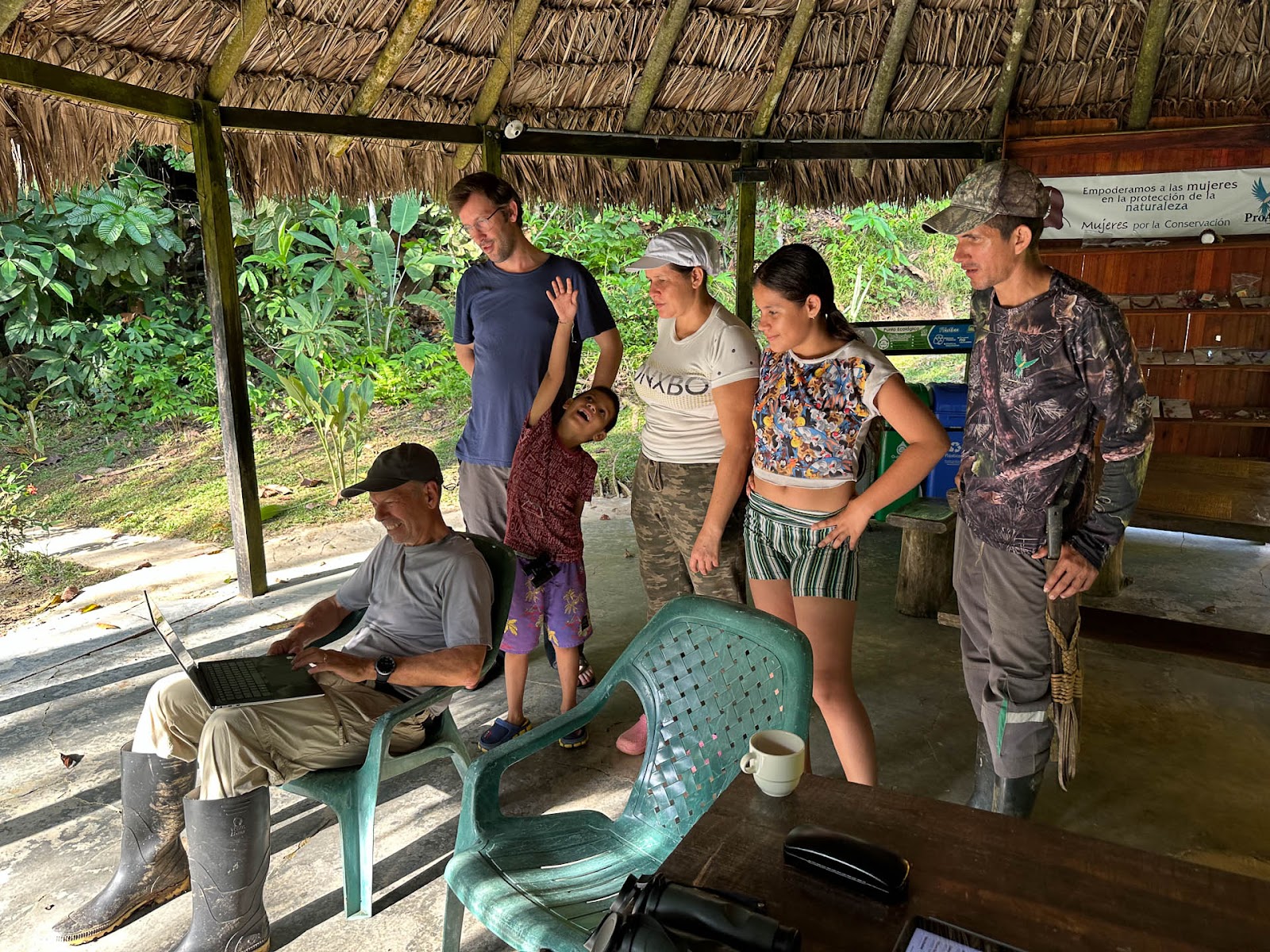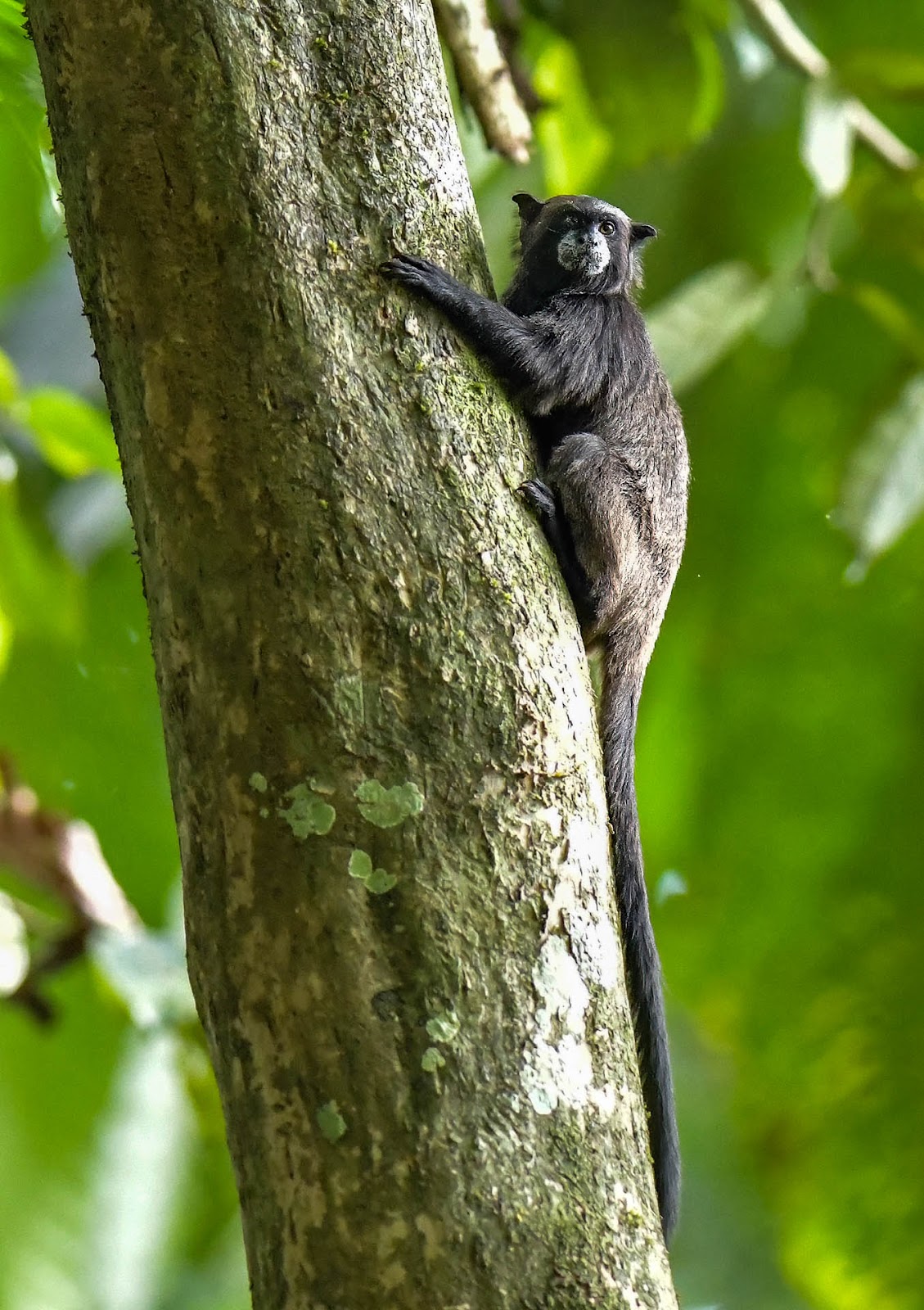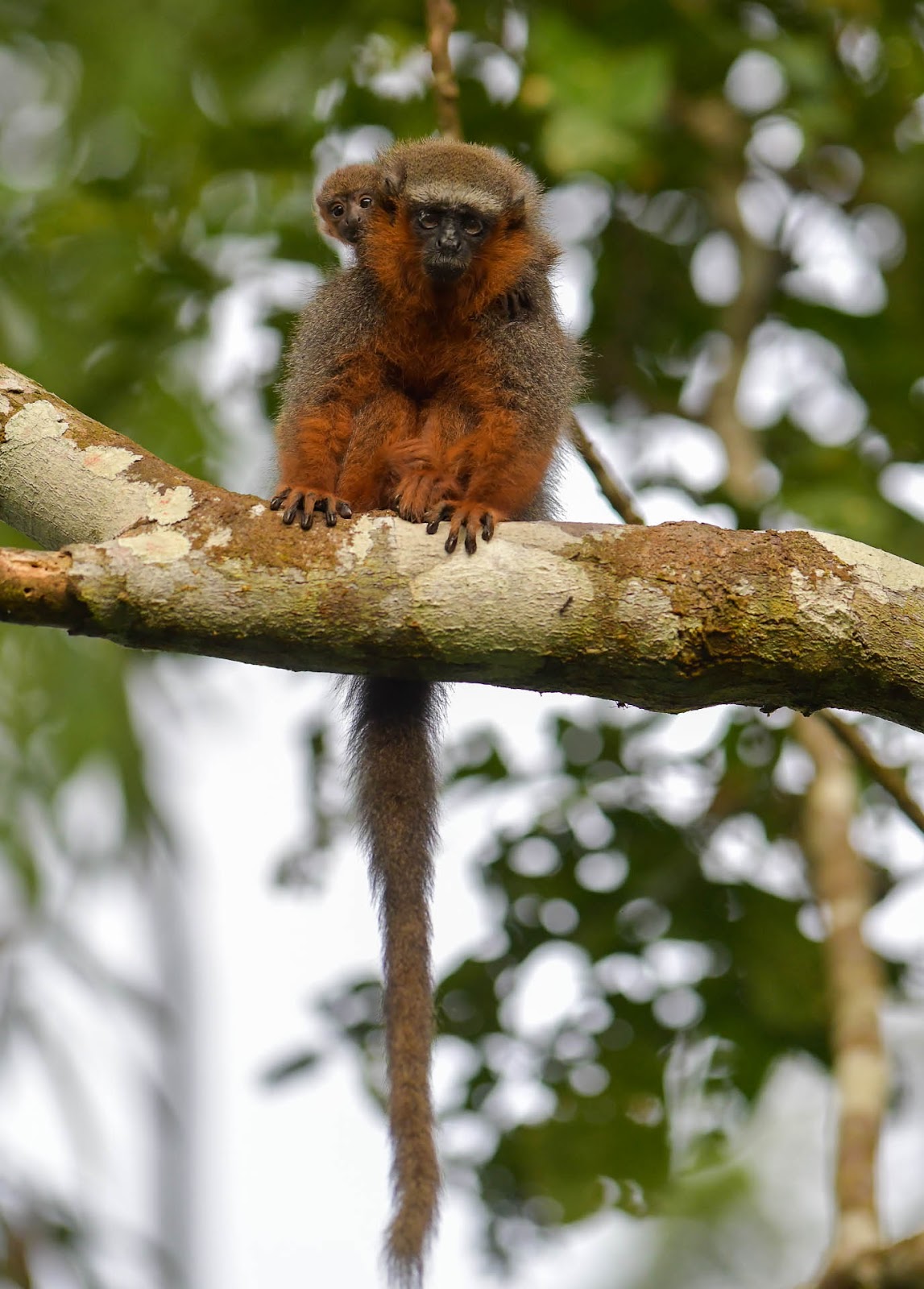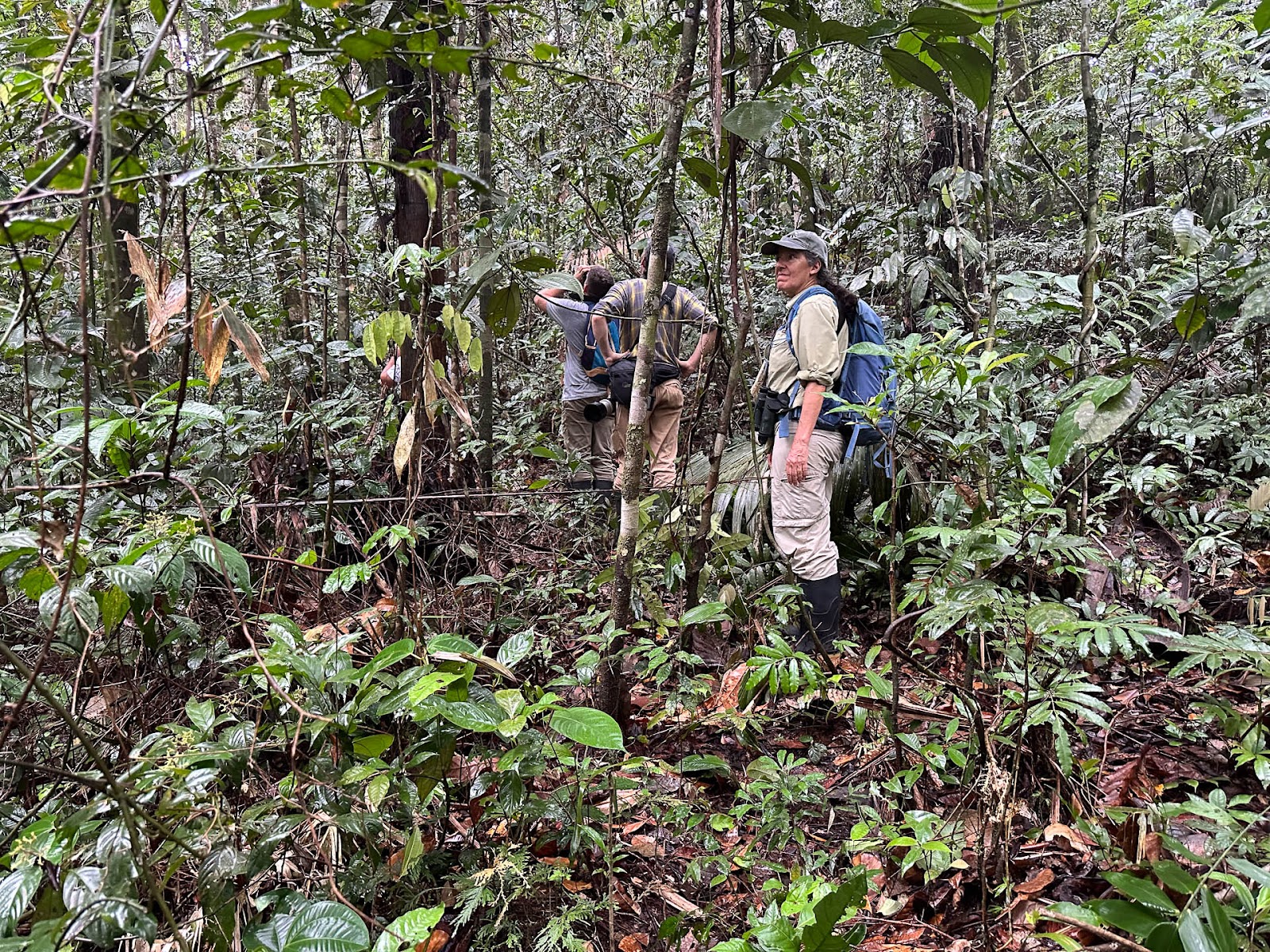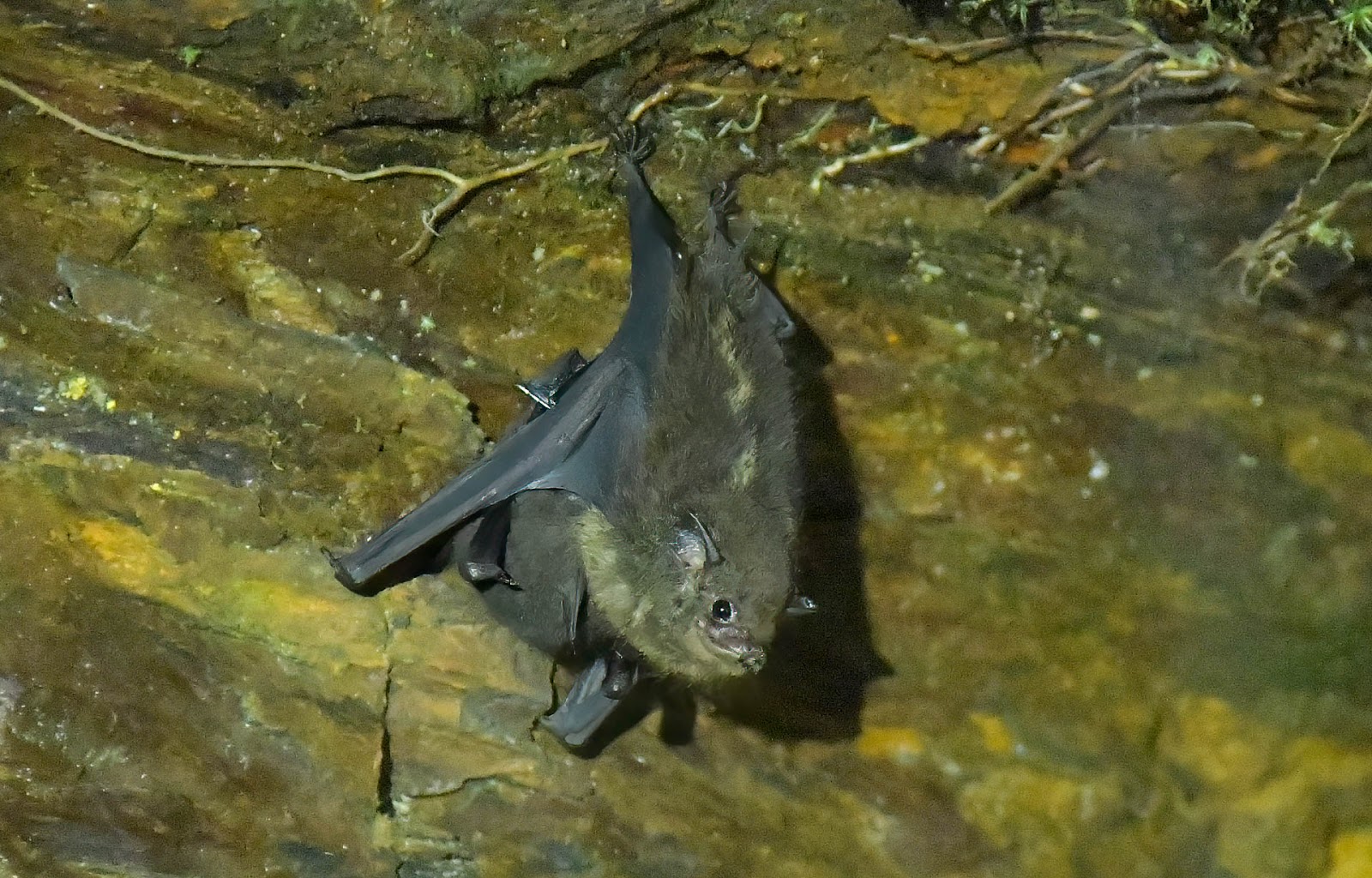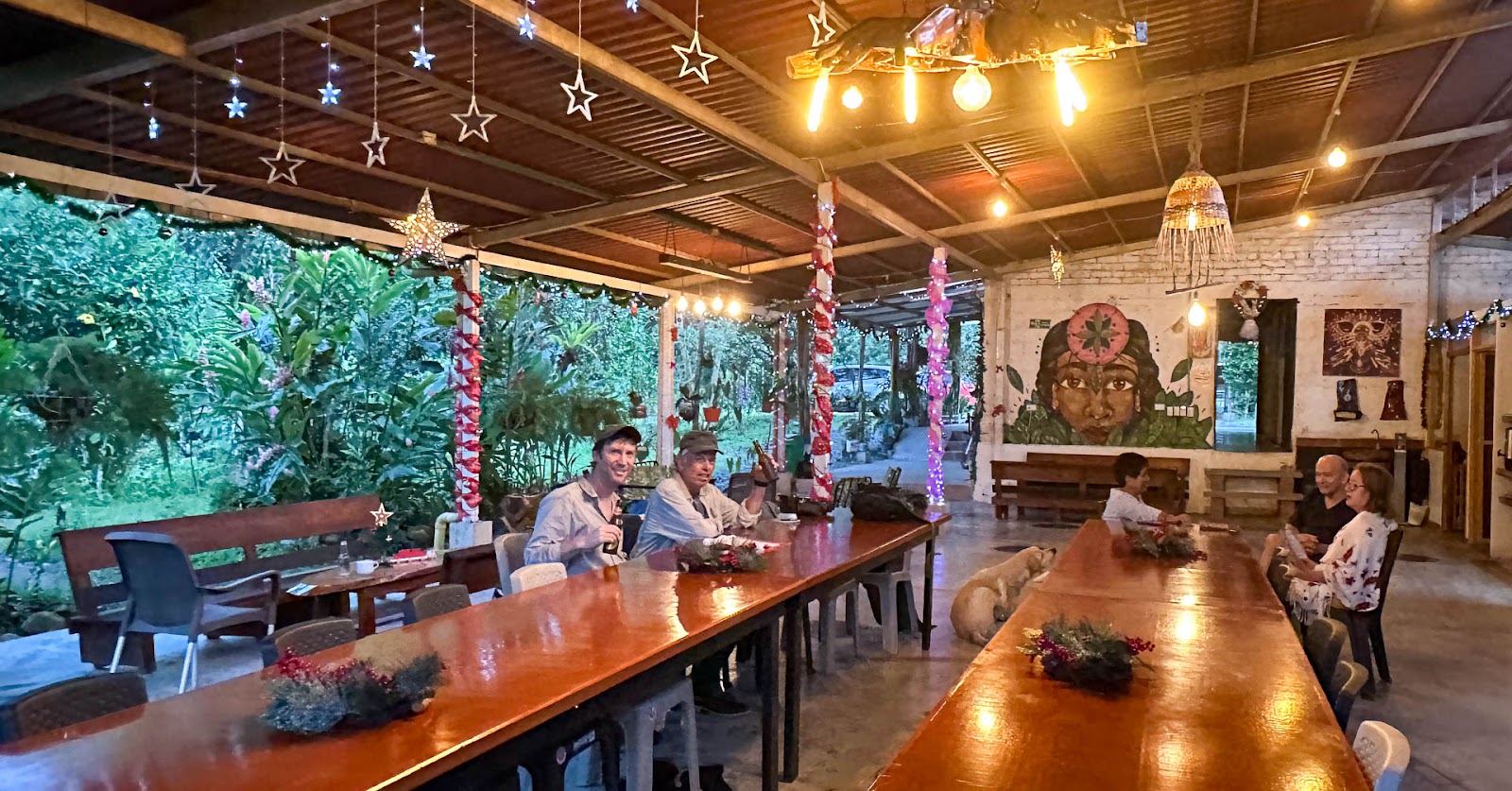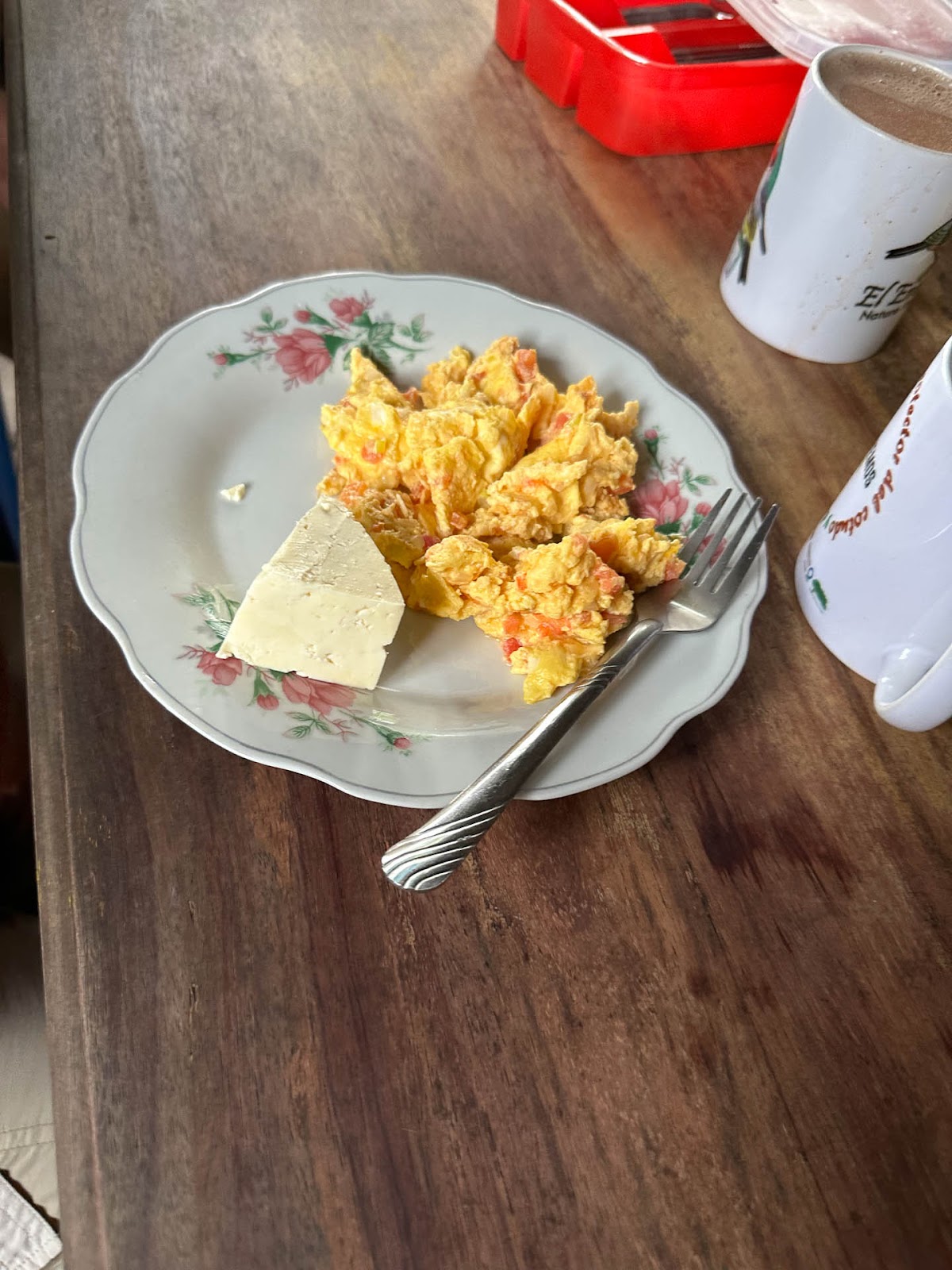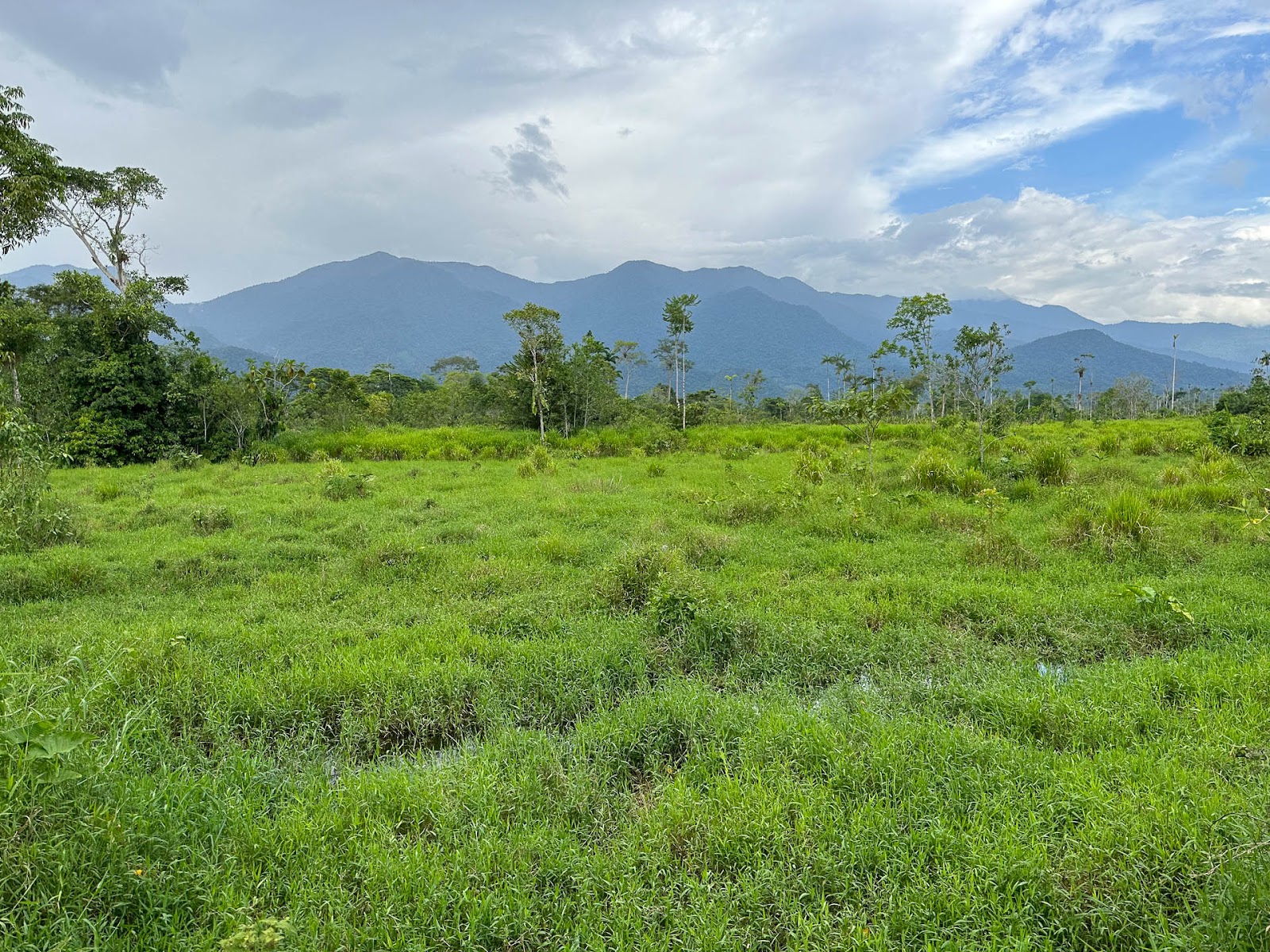After a wildly successful “Mission Monkey” in Colombia, we have switched gears to look for some of the country’s colorful birds. On December 23 we flew from Medellin to Cali where we were met for our transfer to Araucana Lodge. When we visited Colombia in 2016 with Chris Calonje of "Columbia Birdwatch", Araucana Lodge was a dream in the making. Now, 6 years later it was reality and we arrived in time for happy hour with a Vermont friend, Liz.
Early the next morning, Marc, Liz, and I left to explore the Upper Anchicayá region with our guide Gilberto. We used Chris’ old Toyota 4x4 and drove down the highway until Km 30 and turned off onto a side road. It was raining and our chances of seeing the Rufous-crested Tanager were slim. We made a few stops along the way to look and listen for the birds but they weren’t around. We did see a Bat Falcon, Andean Motmot, Lyre-tailed Nightjar, Rufous-throated Tanager, Purplish-mantled Tanager, and Cinnamon Flycatcher.
We arrived at Doña Dora, our primary destination for the day, to bird at their feeders. When Dora Londoño first moved here, she set up a little cafe for passing truck drivers on their way to the Pacific port city of Buenaventura. A large fig tree in her garden attracted many birds and over time Doña Dora became a popular spot for local birders. Dora added hummingbird feeders and put out fruit to attract a colorful array of tanagers and barbets. Today, Doña Dora is a birding hotspot for domestic and foreign visitors alike.
 |
| Breakfast at Doña Dora |
After settling in at a table overlooking feeders stocked with bananas and papaya we noticed immediately the family of Toucan Barbets nesting in the cavity of a nearby tree. This Chocó endemic is only found in Western Ecuador and Colombia and being a canopy species it normally is difficult to see. Here, they frequently visited the feeders a short distance away giving us unparalleled viewing and photographic opportunities.
In addition, many brightly colored tanagers visit the feeders. Among them were Silver-throated Tanager, Flame-rumped Tanager, and Black-chinned Tanager. We were entertained by the hummingbirds visiting the tiny feeders set on the table while eating breakfast. One even perched on Marc’s coffee cup!
 |
| Green-crowned Brilliant at the Table |
We spent most of the morning here visiting the hummingbird feeders and upper balcony. We logged over 40 species of birds! The diversity of hummingbirds was truly amazing with 14 species seen including White-necked Jacobin, Green Emerald, White-whiskered Hermit, Brown Violetear, Green Thorntail, Violet-tailed Sylph, and Velvet-purple Coronet.
 |
| Green Thorntail |
We put out some rice for the rats that Liz had seen on a previous visit. They finally braved the rain and came out to feed. They were later identified as Dusky Rice Rats by Venkat Sankar.
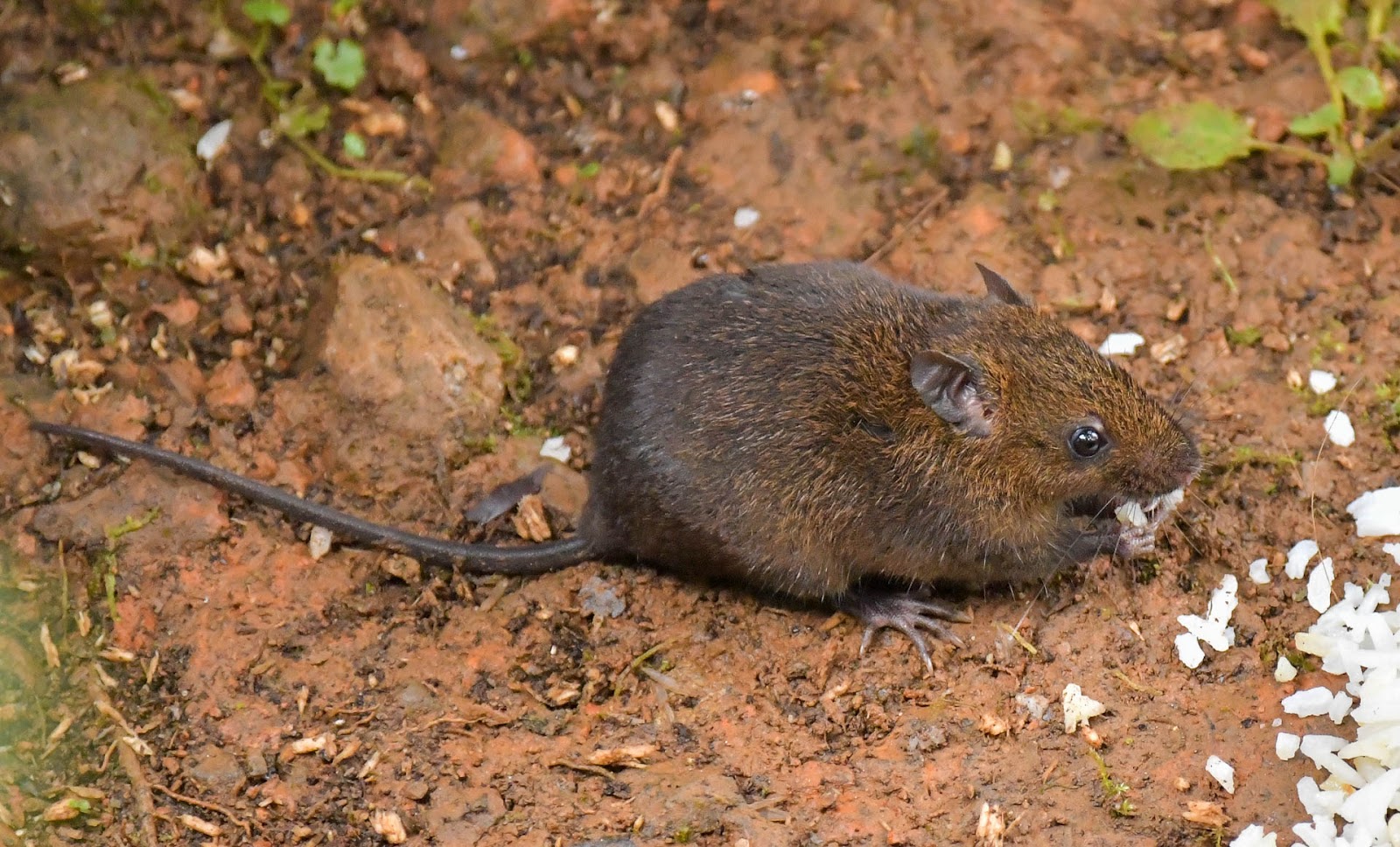 |
| Dusky Rice Rat |
The rain let up so we walked up the road about a km where we were able to see Ornate Flycatcher, Yellow-throated Chlorospingus, Glistening-green Tanager, and Rufous-throated Tanager.
After lunch, we drove back to the lodge. Being Christmas Eve the traffic was heavy, particularly around Km 30 where we encountered a devil, a drag queen, and an ape-like creature collecting money. The devil was quite persistent but we didn’t give him a donation.
 |
| The Devil |
The staff at Araucana Lodge had prepared a Christmas Eve feast complete with turkey, stuffing, mashed potatoes, and mushroom gravy for us! We were joined by Chris, his wife Vivian, her sister, and a few other lodge guests for a family-style celebration.
Christmas Day in Colombia with our friend Liz had finally come to fruition after months of planning! We spent a peaceful day birding at the lodge feeders in the morning then were joined by Gilberto for more birding around the lodge grounds. The trail went through a bamboo forest where we got a glimpse of a Parker’s Antbird and Liz spotted 2 Tropical Screech Owls roosting high in the bamboo. We popped out by Chris’ father’s house where we had birded 6 years ago. We got a decent look at a Bar-crested Antshrike which is the bird on the Araucana Lodge’s logo.
The next day’s bird outings included San Felipe, a private hacienda purchased by the Calle family in 1989, that now is being preserved as a nature reserve that caters to birders. The first stop was a blind overlooking some feeders not far from the main house. Here we saw Chestnut Wood-quail endemic to Colombia and a secretive species not easily seen.
 |
| Chestnut Wood-quail |
We then headed down into the forest to a hide that had been set up to view Little Tinamou. We’ve heard the iconic wailing of these birds often but like many forest-dwelling birds, they are shy and rarely come out in the open. We waited in the hide while the local guide put out food to attract the birds. Sure enough one Little Tinamou showed up and then a second. The female has more of a chestnut color and surprisingly was the vocal one calling to another male in the forest. Not only was it amazing to see these birds but to hear the female calling was really special.
 |
| Little Tinamou Pair |
We went to a third hide built behind a weather trough. It gave the unique perspective of photographing birds with reflections. Many brightly-colored tanagers showed up including Saffron-crowned, Golden, Palm, Flame-rumped, Scrub, Black-capped, Golden-naped, Blue-necked, and Summer Tanager. We had a veritable “avian rainbow” unfolded before us!
 |
| Golden-naped Tanager |
We returned to the main blind where more vibrant birds were visiting now that it was a bit warmer. New species included Blue-winged Mountain-Tanager, Orange-billed Nightingale-Thrush, Colombian Chachalaca, Sickle-winged Guan, and Green Jay.
 |
| Orange-billed Nightingale-Thrush |
After lunch at Araucana Lodge, we returned to Km 18 and drove to a finca at the end of the road called La Florida. The owner Javier and his wife have a small hotel, gardens, a gift shop, and feeders to cater to birders. The weather wasn’t great with clouds and intermittent showers but Javier’s wife served us a much-needed cup of locally-grown coffee. There were still birds visiting the feeders. Many were species that we had seen but there were a few new species including Long-tailed Sylph, Greenish Puffleg, Southern Emerald-Toucanet, and finally a highly sought-after Multicolored Tanager.
 |
| Multicolored Tanager |
We went to another hide nearby to see the Scaled Antpitta. Here, a tape was played to call the birds to come and feed on worms put out. A crafty Andean Motmot had learned the call and came to feast on the worms but Javier scared it away.
 |
| Andean Motmot |
The man on the tape pioneered conditioning Antpittas to come to a feeding station. Although somewhat comical, the method works.
Calling Scaled Antpittas
We got great views and photos of these birds that would otherwise be nearly impossible. The bird got its fill of worms and left. A second or maybe the same one returned a few minutes later so we got a second show.
We spent a relaxing morning at Araucana Lodge, a fitting end to our 3 and a half week return visit to Colombia. In the 1950s, Chris’ grandparents purchased 30 acres in the Western Andes of Colombia and built a small finca which they named La Araucana. The finca was a place to escape the hustle and bustle of city life and reconnect with nature. Following in the spirit of their grandparents, the Calonje family built Araucana Lodge to share this special place with others. We thank them for their warm hospitality!
We hope all is well with everyone.
Peggy and Marc
Our route map:


